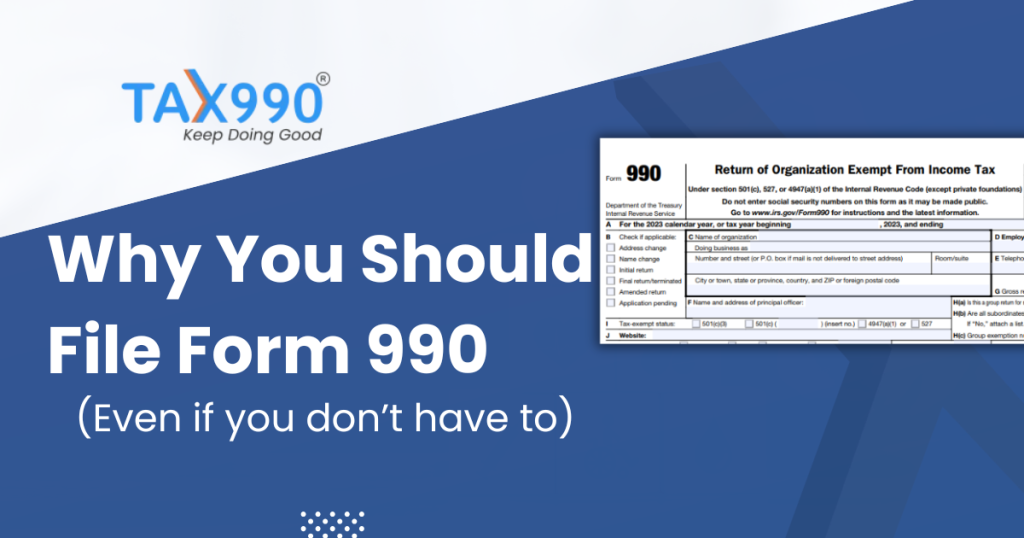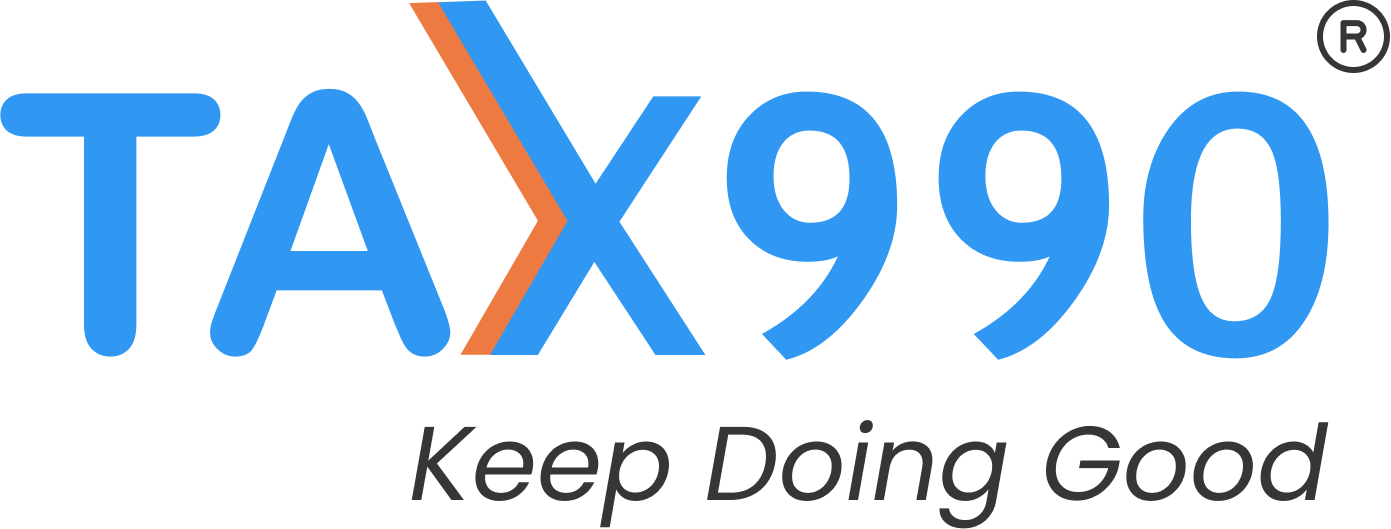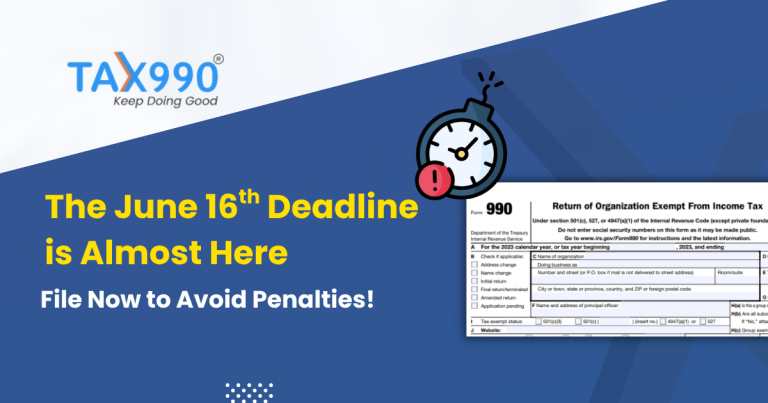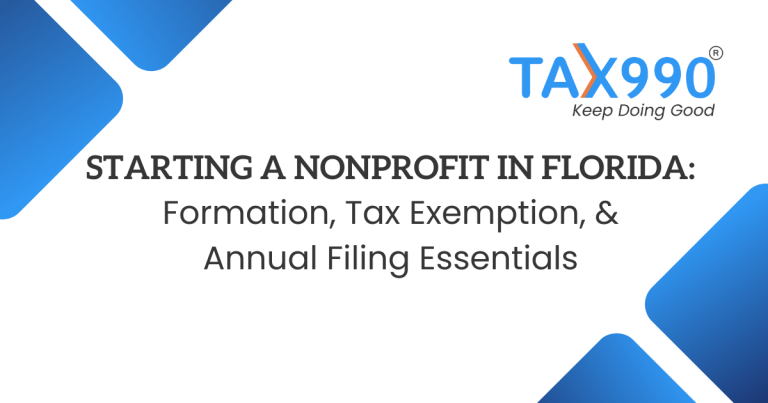Estimated reading time: 11 minute(s)

To preserve their tax-exempt status, nonprofits are required to file a return with the IRS Form 990 series each year. This series includes a set of annual information returns that most tax-exempt organizations must submit to remain in compliance with federal regulations. The forms provide the IRS and the public with vital details about a nonprofit’s financial health, mission, programs, and governance, reinforcing transparency and accountability across the sector.
While many tax-exempt organizations qualify to file shorter versions of the IRS Form 990, such as Form 990-EZ or the 990-N e-Postcard, some nonprofits are voluntarily choosing to file the full Form 990 instead. This strategic decision allows organizations to provide a more comprehensive view of their finances, governance, and program outcomes.
Understanding the Different Types of Form 990
Understanding the differences between each Form 990 version and knowing when it may be beneficial to file a more detailed form is essential for making informed, strategic filing decisions.
Listed below are details and requirements regarding the 990 series forms.
- If gross receipts are less than or equal to $50,000, organizations will need to complete the Form 990N (e-Postcard) if eligible.
- If an organization has gross receipts less than 200,000 and total assets less than $500,000, it will file the Form 990-EZ.
- If gross receipts exceed or equal $200,00 (or) assets exceed or equal $500,000, the organization can file Form 990.
- Private foundations will need to fill out the Form 990-PF instead of the regular 990, 990-EZ, or 990-N.
- If an organization has unrelated business income, it will file a Form 990-T in addition to the organization’s annual information return.
The Impact of Selecting a More In-Depth Form 990
Organizations may choose to file a more detailed form to demonstrate transparency, accountability, and trust, thereby strengthening their public image to potential investors.
- Increased Transparency: Transparency is a result of showcasing a detailed financial disclosure. This includes a breakdown of revenue sources, functional expenses, assets, and liabilities. Also, additional schedules reveal information about donors, lobbying activities, fundraising, foreign operations, and more. This level of transparency helps stakeholders see how funds are managed and how efficiently the organization operates.
- Improved Credibility: Along with transparency, filing a higher 990 form increases accountability due to the more detailed disclosures about finances, leadership, and operations. This strengthens public perception and builds donor and grantmaker confidence.
- Better Access to Funding: As mentioned previously, filing a more detailed 990 form provides a full picture for funders by providing them with comprehensive financials, program accomplishments, governance practices, and leadership details. All of which help in evaluating your organization’s stability and impact.
Key Considerations Before You File
Although there are benefits to filing more detailed 990 forms, it also comes with drawbacks. Some of these drawbacks include the increased time it takes to file, higher filing costs, greater risk of errors, and public disclosure of sensitive information, including compensation, governance practices, and program service accomplishments. Another risk of filing a higher 990 form is that it may mislead funders or stakeholders into thinking the organization is larger or more complex than it is.
Conclusion
Choosing to file a more detailed 990 form isn’t just about meeting IRS requirements; it’s a proactive step toward building greater transparency, trust, and credibility within the nonprofit community. While it may require more time and effort, the potential rewards, stronger donor confidence, improved funding opportunities, and a more compelling public image, can make a significant difference in your organization’s growth and long-term impact. By embracing a higher standard of disclosure, you’re not only showcasing your accountability but also positioning your nonprofit as a leader in responsible governance.
Ready to take your reporting to the next level? Explore filing options with Tax990 and see how our software makes it easy to file the right form accurately, securely, and on time.




Leave a Comment